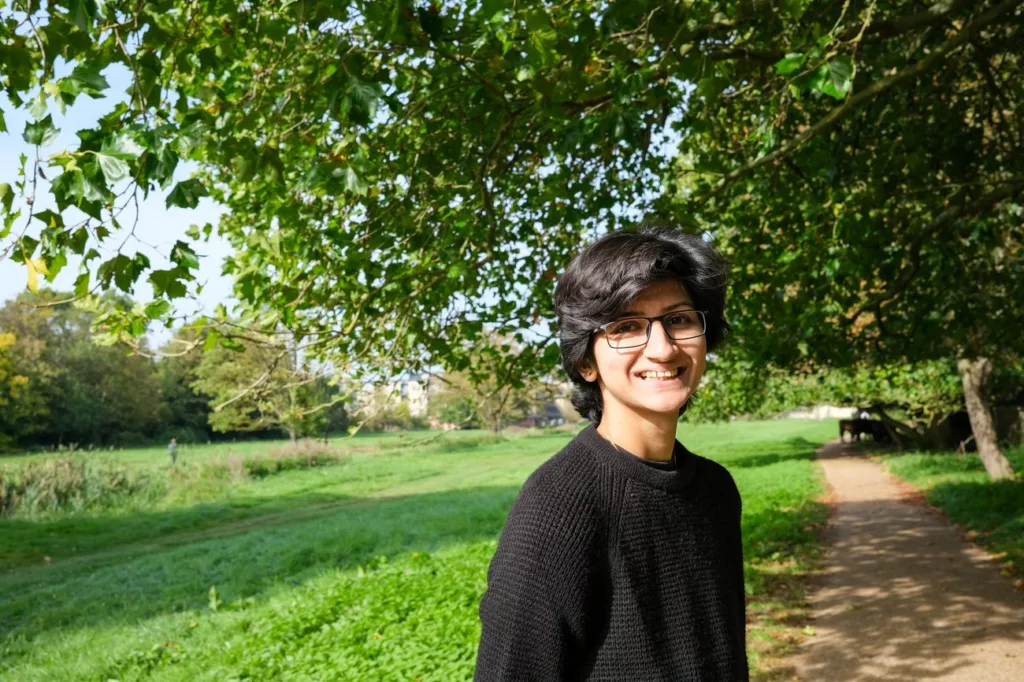[ad_1]
Editor’s observe: At the moment we’re constructing on our long-standing partnership with the College of Cambridge, with a multi-year analysis collaboration settlement and a Google grant for the College’s new Centre for Human-Inspired AI to assist progress in daring, accountable and collaborative AI that advantages everybody. Our grant is funding college students from underrepresented teams to hold out PhDs inside CHIA. Aleesha is a kind of college students.
5 years in the past, my cousin, an attractive younger lady within the prime of her life, confronted a horrifying ordeal. She was brutally attacked and left with a traumatic mind harm and extreme bodily disabilities. Miraculously, she survived, however her life was ceaselessly altered. She abruptly discovered herself paralyzed and unable to talk. As she slowly regained cognitive perform, we needed to set up some channel of communication together with her to know her wants, ideas and feelings.
The primary glimmer of hope got here from her eyes: she might gaze upwards to suggest “sure”. Her neck muscular tissues have been weak, however she progressively started to direct her gaze deliberately to inform us what she needed. It was at this stage in her journey that she was launched to a pc geared up with gaze-interaction expertise. By eye-tracking, she was in a position to look in the direction of sure letters on an on-screen keyboard to sort phrases. However this was gradual and tiring. With developments in AI, there may be big potential to vary this by making gaze detection quicker and extra correct
The trail to environment friendly communication was removed from easy. It was usually a irritating and heart-wrenching course of. For the expertise to work, she needed to concentrate on every letter for a time frame, however there have been many occasions when her focus wavered, or her neck wouldn’t maintain regular. The method was gradual, concerned plenty of errors, and plenty of makes an attempt led to misery.
My cousin’s wrestle isn’t distinctive. For many individuals like her who’ve misplaced motor perform as a result of harm, in addition to these with neurological issues reminiscent of Cerebral Palsy or A number of Sclerosis, gaze interplay is the one doable technique of efficient communication. Whereas assistive applied sciences reminiscent of eye-typing have transformative potential to vary lives, even the very best eye-typing techniques at present report comparatively gradual textual content entry charges of round 7-20 phrases per minute (wpm) in comparison with typical talking charges which vary from 125-185 wpm. It is a placing hole and it highlights the necessity to maintain bettering assistive applied sciences to boost the standard of life and empower all these people who depend on them to speak.
That is what my analysis goals to handle. The purpose is to make communication environment friendly and accessible for the numerous people with motor disabilities for whom these applied sciences is usually a life-changing actuality. By understanding how greatest to make use of AI, I need to reimagine how customers can sort effectively utilizing their eyes.
I’ve been extremely lucky to have the ability to pursue this by way of the assist of Google and the Centre For Human Impressed Synthetic Intelligence (CHIA) on the College of Cambridge. I started my Ph.D. earlier this 12 months, underneath the supervision of Professor Per Ola Kristennson, whose seminal work on an AI-powered method referred to as ‘dwell-free’ eye-typing has opened up the potential for a paradigm shift in the best way these techniques are designed.
A salient hole in progress of eye-typing techniques is the shortage of direct engagement with the end-users themselves. To know their wants, desires, and boundaries I’ve begun interviewing non-speaking people with motor disabilities that depend on eye-typing for his or her day by day communications, enabling the design of expertise that higher permits eye-typing customers to attain their objectives. This displays the strategy the CHIA is taking to AI innovation — putting the individuals who’ll be most impacted by AI on the coronary heart of the event course of.
By enhancing gaze typing expertise with AI, we purpose to empower folks, like my cousin, to specific themselves, join with the world, and regain a way of independence.
[ad_2]
Source link
